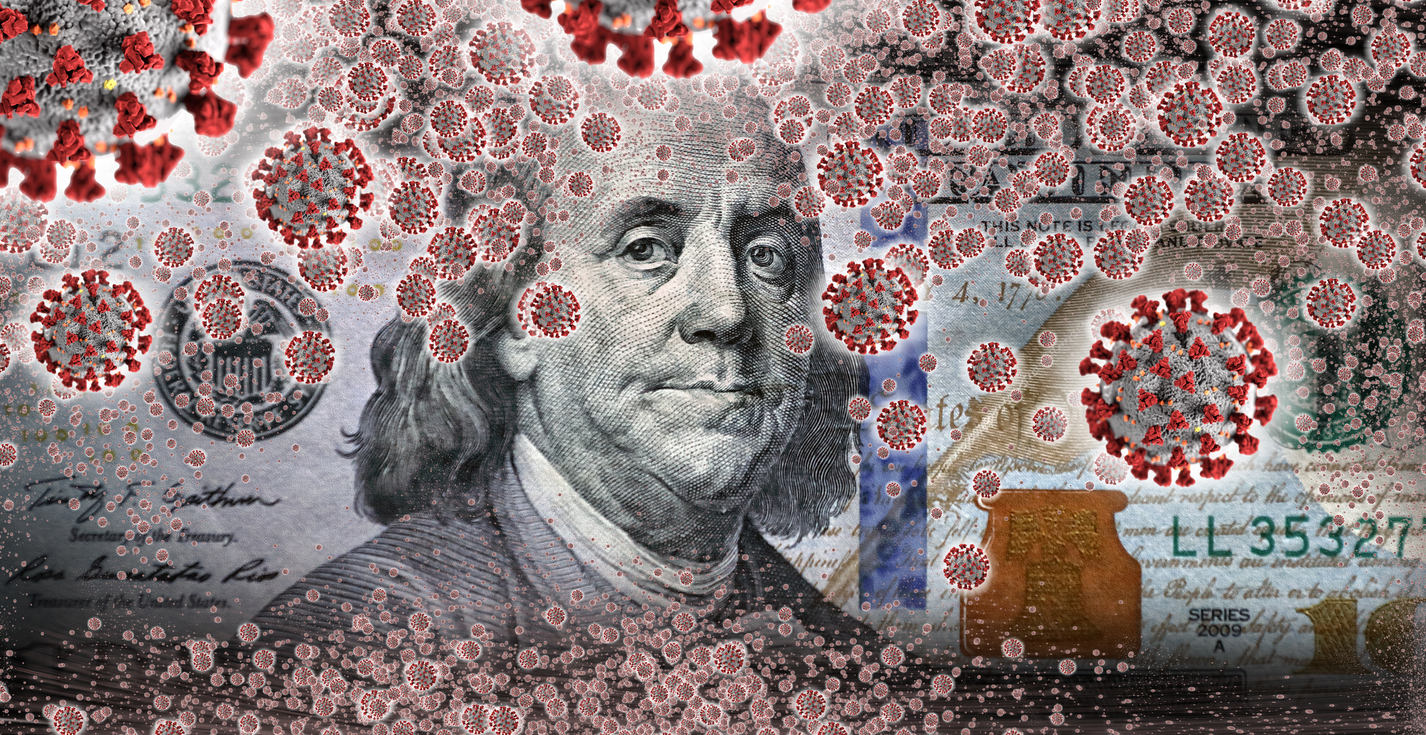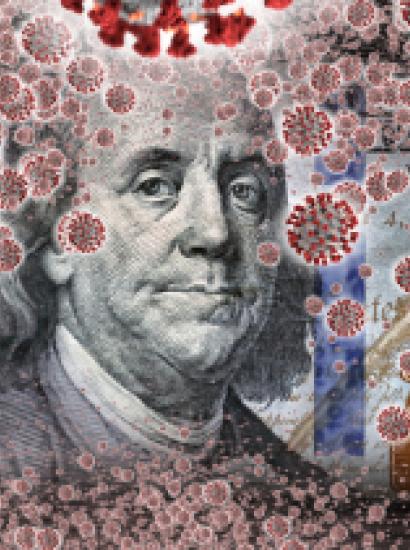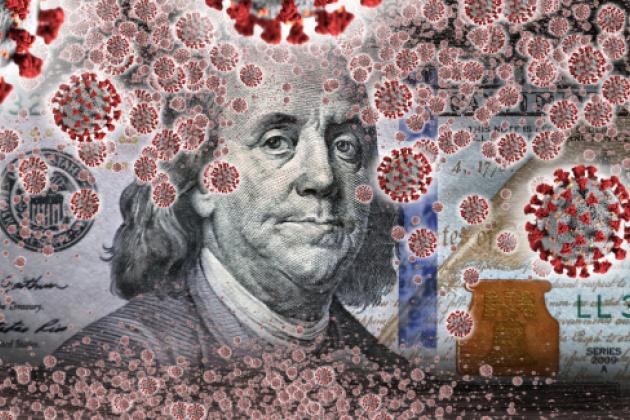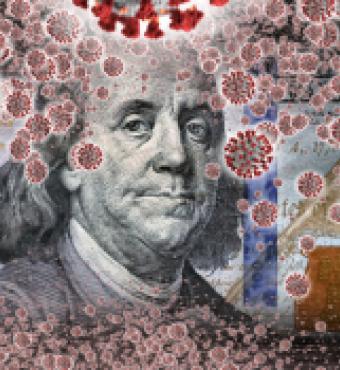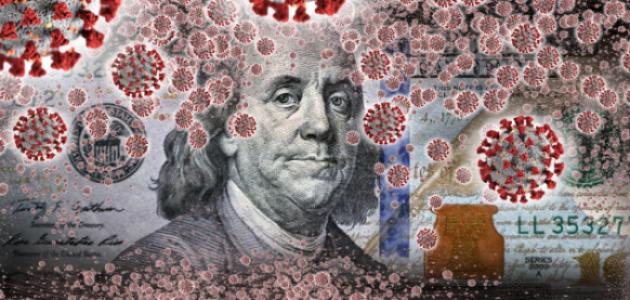In his 1987 book Crisis and Leviathan, economic historian Robert Higgs argued that in the 20th century, the U.S. federal government grew mainly as a result of three crises: World War I, the Great Depression, and World War II. During those crises, the feds raised taxes, introduced more spending programs, and took on more regulatory power. While much of the added government power fell after each of the three crises ended, it never fell back to where it was before the crisis. Higgs called this a “ratchet effect.” In the 21st century, we saw the same ratchet effect with, first, the federal government’s surveillance state after 9/11 and second, the extensive regulatory response to the financial crisis with the Dodd Frank law.
We therefore have grounds for pessimism about the Covid crisis. Large percentages of Republicans and Democrats in the House of Representatives and the Senate have already voted for spending more than $2 trillion above what was planned as recently as early March and may be about to spend at least another trillion dollars. There are even more grounds for pessimism when we look at what the Federal Reserve Board is doing.
On net, I’m pessimistic. But there are grounds for guarded optimism. Something happened during this crisis that did not happen in any of the other crises: deregulation. It’s not just at the federal level. State governments have also lightened up on regulation. We don’t know how much of this deregulation will last: some will, some won’t. But it’s different in kind from what happened in the other crises.
Consider the three crises that Higgs analyzes in Crisis and Leviathan, under three categories: taxation, government spending, and regulation.
First, taxation. When World War I began in 1914, the 16th Amendment to the U.S. Constitution, which allowed an income tax, had recently passed. The top marginal tax rate was 7 percent and it applied only to taxable income over $500,000. Adjusted for inflation, that would be $12.9 million today. The top tax rate in 1916, the last full year before the U.S. government entered World War I, was 15 percent and it kicked in at an income of $2 million, which, adjusted for inflation, would be $49.6 million today. Lower- and middle-income classes were not touched by the income tax. By 1917, the first year that the United States was in World War I, the top marginal tax rate kicked in at $2 million and had zoomed to 67 percent. By 1918, it had risen to 77 percent on incomes of $1 million or more. In 1915, the lowest marginal tax rate was only 1 percent and applied to incomes of $4,000 or more ($103,000 in today’s dollars.) In 1917, the rate doubled to 2 percent and by 1918 it had reached 6 percent. The incomes to which it applied for married couples had dropped by half, to $2,000. So the income tax was still a “class tax,” not a “mass tax.”
In 1921, President Warren Harding and his Treasury secretary, Andrew W. Mellon, gradually dropped marginal tax rates at all levels, from 73 percent at the top in 1921 to 56 percent in 1923 and from 4 percent at the bottom in 1921 to 3 percent in 1923. After Harding died in 1923, President Calvin Coolidge kept Mellon at Treasury and they dropped the top rate from 56 percent to 25 percent by 1928 and the bottom rate to 3/8 of a percent by 1928. The top rate fell slightly to 24 percent during President Hoover’s first year in office, 1929, and never again fell below 24 percent.
In his last full year in office, 1932, President Hoover responded to the federal budget deficit by more than doubling marginal tax rates at all income levels: from 25 percent to 63 percent at the top and from 1.125 percent to 4 percent at the bottom. Then came the New Deal and World War II. FDR raised the top rate to 79 percent in 1936 and it reached a high of 94 percent in 1944, the height of World War II military spending. But the big news on taxes under FDR was that the “class tax” became the “mass tax.” Helped along by income tax withholding during World War II, the marginal tax rate for married couples with income over $1,000 in 1944 ($14,816 in today’s dollars) hit 23 percent.
How about government spending? Federal government spending in 1916 was only 1.8 percent of U.S. Gross National Product. By 1918, with full war mobilization, that had zoomed to 16.8 percent. Its post-WWI low was 3.0 percent of GNP in 1929. That was a substantial drop but it was over 60 percent higher than its share of GDP before World War I.
The tale of government spending during the Great Depression is, with apologies to the founder of the Hoover Institution, a tale of two big spenders: Herbert Hoover and FDR. Hoover actually had a mini-New Deal, expanding government spending as a percent of Gross Domestic Product from 3.0 percent in 1929 to 7.8 percent in 1932. One reason for this increase, of course, is that the denominator, GDP, fell. That, after all, is what we mean by a depression. But Hoover substantially increased the numerator, federal government spending.
By 1941, the economy had recovered substantially from the Great Depression, and it wasn’t due to war. America was not at war for all but the last 24 days of the year. The unemployment rate had finally fallen slightly below double digits, to 9.9 percent. (It had reached a peak of 25 percent in 1933.) But federal spending had reached 10.6 percent of GDP. As a result, FDR’s defenders can’t blame the denominator. Government spending as a percent of GDP reached its World War II peak at 40.7 percent in 1944. The ratio reached its post-WWII low at 10.8 percent of GDP in 1948, but with the Cold War and the Korean War, it rose again to 19.6 percent of GDP by 1953. It fell to 15.8 percent of GDP in 1956 and has never been that low since.
The same picture—increase and then decrease but never back to the old level—applies to regulation. During World War I, President Wilson nationalized the railroads. After the war, the railroads were returned to their owners, but the Transportation Act of 1920 gave the Interstate Commerce Commission control over rates and even over the construction, use, and abandonment of facilities. That control did not end until 1980. During the Great Depression, the government fixed prices of agricultural commodities, extensively regulated securities markets, intervened in union-management relations, produced and sold electric power, and instituted the minimum wage, unemployment insurance, and Social Security. All those programs exist today. During World War II, the feds controlled wages, prices, and rents. Rent control in New York City was supposed to be temporary, but it still exists today. One of the major regulations in the labor market was the draft. It was introduced in 1917 and ended after the war ended. But FDR introduced the draft in 1940 and it remained in force, with a one-year hiatus in 1948, until 1973.
Now let’s look at today.
I’ve written extensively about the ham-handed way the federal government is spending our and, through debt finance, our children’s money on government handouts to businesses and individuals. The net result will be that within a year and maybe even this year, the federal debt held by the public will equal our GDP. To put that in perspective, as recently as January, the Congressional Budget Office projected that that would not happen until 2030. Most economists were concerned that the federal budget deficit would be $1 trillion this fiscal year, which ends on September 30. Now many of us will be thrilled if it’s closer to $3 trillion than to $4 trillion. So even if none of the spending programs, the main ones being Payroll Protection and enhanced unemployment benefits, are temporary, the added debt will be with us for decades.
Moreover, the Federal Reserve, which took on new powers during the financial crisis of 2007-2009, is going further down that path. In a March 23 press release the Fed states, “The Federal Reserve is committed to using its full range of tools to support households, businesses, and the U.S. economy overall in this challenging time.” The release then goes on to list various assets that the Fed will buy, including corporate bonds and municipal government bonds. We used to think of the Fed as the agency whose main purpose was to keep inflation low. That’s so 20th century. The Fed is now essentially the agency that gets to decide which investments are important; it is conducting an industrial policy in all but name.
That’s really bad. We’ll see how much of that power the Fed drops when the pandemic ends.
But what’s new and positive this time is the extensive deregulation that the federal government and state governments have undertaken to deal with the Covid-19 pandemic.
On its website, Americans for Tax Reform (ATR) lists 850 regulations that have been waived, at the federal or state level, to help fight Covid-19. Some of them seem relatively trivial, but many are substantive.
Start with the federal government. The Food and Drug Administration (FDA), whose acronym Milton Friedman pointed out in the 1970s could stand for Frustrating Drug Advancement, will likely, true to form, slow down advances toward a vaccine. But what’s striking is that even that agency has lightened its regulation to help us cope with Covid. In March, the FDA announced that it would allow manufacturers to distribute newly developed tests for Covid-19 without getting emergency clearance from the FDA.
Another important deregulatory move by the feds was the Department of Health and Human Services’ lightening up on HIPPAA regulations that, until recently, made it illegal for doctors to communicate with patients via Facetime, Zoom, Skype, etc. John C. Goodman, a Texas-based health economist, had been advocating telemedicine for decades. It’s now a done deal. HHS will probably have trouble putting that genie back in the outdated bottle. One reason is that the relaxation of lockdowns is occurring at different times from state to state. So when does HHS say, “Sorry, you can do telemedicine in Texas, but not in California?”
As you scroll down the ATR site, you find numerous examples of deregulation by states. In Alabama, for example, nurse practitioners (NPs) are now allowed to perform “all skills authorized in the facility protocols within the scope of NP’s education and training.” Wow! Nurse practitioners are now authorized to do what they were trained to do. What a radical idea. That bell will be hard to unring. In Arizona, Certified Registered Nurse Anesthetists will no longer have to be supervised by a doctor. On the ATR site, the deregulating states are listed alphabetically and notice that I haven’t even got through the states beginning with “A.”
One deregulation that is permanent is a relaxation of occupational licensing laws in Pennsylvania. Recently Democratic governor Tom Wolf signed a law passed by a bipartisan majority of the Pennsylvania legislature. According to Reason writer Eric Boehm, “The new Pennsylvania law will ban 29 licensing boards from using broad and vague language to effectively prohibit anyone with a criminal history from obtaining a license.” While this is not directly Covid-19 related, it’s likely that the sorry state of Pennsylvania’s locked-down economy was a factor in the new law.
Unfortunately, almost all of the deregulation is temporary. The good news is how substantial it is and the fact that some of it is permanent and other elements of deregulation could be permanent.
Because of all the debt and because of all the powers that the Federal Reserve has acquired, a few years from now we will likely have a more-powerful federal government than we have now. But the difference between this and the crises of the previous 103 years is that this time we have actually had serious moves to deregulation.







